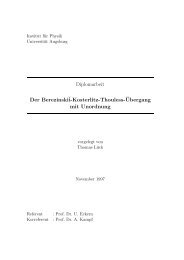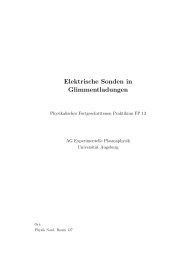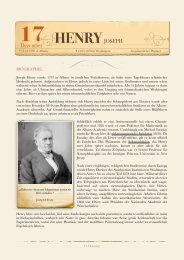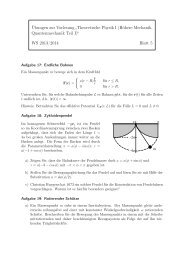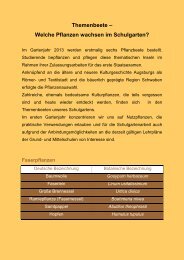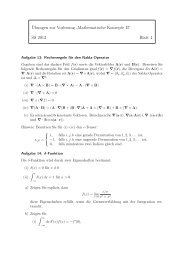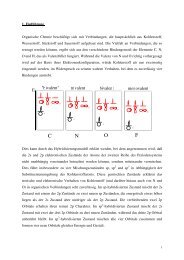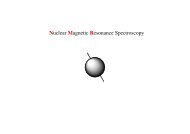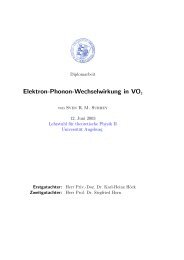Numerical Renormalization Group Calculations for Impurity ...
Numerical Renormalization Group Calculations for Impurity ...
Numerical Renormalization Group Calculations for Impurity ...
You also want an ePaper? Increase the reach of your titles
YUMPU automatically turns print PDFs into web optimized ePapers that Google loves.
4.3. Structure of the quantum critical points 35<br />
where the |ω n | r self-energy term dominates <strong>for</strong> r < 1, and the prefactor A 0 is<br />
A 0 = πρ 0V 2<br />
cos πr . (4.12)<br />
2<br />
Eq. (4.11) describes the physics of a non-interacting resonant level model with a<br />
soft-gap density of states. Interestingly, the impurity spin is not fully screened<br />
<strong>for</strong> r > 0, and the residual entropy is 2r ln 2. This precisely corresponds<br />
to the symmetric strong-coupling (SC) phase of the soft-gap Anderson and<br />
Kondo models (Gonzalez-Buxton and Ingersent 1998). Dimensional analysis,<br />
using dim[f] = (1 − r)/2 [where f represents the dressed Fermion according to<br />
Eq. (4.11)], now shows that the interaction term U of the Anderson model scales<br />
as dim[U] = 2r − 1, i.e., it is marginal at r = 1/2. This suggests a perturbative<br />
expansion in U around the SC fixed point. We introduce a dimensionless<br />
renormalized on-site interaction u via<br />
U = µ 2r−1 A 2 0u. (4.13)<br />
The beta function receives the lowest non-trivial contribution at two-loop order<br />
and reads (Vojta and Fritz 2004)<br />
β(u) = (1 − 2r)u −<br />
3(π − 2 ln4)<br />
π 2 u 3 + O(u 5 ). (4.14)<br />
For r < 1/2 a non-interacting stable fixed point is at u ∗ = 0 - this is the symmetric<br />
strong coupling fixed point; it becomes unstable <strong>for</strong> r > 1/2. Additionally, <strong>for</strong><br />
r < 1/2 there is a pair of critical fixed points (SCR, SCR ′ ) located at u ∗2 =<br />
π 2 (1 − 2r)/[3(π − 2 ln 4)], i.e.,<br />
u ∗ = ±4.22 √ (1/2 − r). (4.15)<br />
These fixed points describe the transition between an unscreened (spin or charge)<br />
moment phase and the symmetric strong-coupling phase (Vojta and Fritz 2004).<br />
Summarizing, both (4.9) and (4.14) capture the same critical SCR fixed point.<br />
This fixed point can be accessed either by an expansion around the weak-coupling<br />
LM fixed point, i.e., around the decoupled impurity limit, valid <strong>for</strong> r ≪ 1, or<br />
by an expansion around the strong-coupling SC fixed point, i.e., around a noninteracting<br />
resonant-level (or Anderson) impurity, and this expansion is valid <strong>for</strong><br />
1/2 − r ≪ 1.<br />
4.3 Structure of the quantum critical points<br />
In Fig. 4.2, the many-particle spectra of the three fixed points (SC: dot-dashed<br />
lines, LM: dashed lines, and QCP: solid lines) of the symmetric soft-gap model



